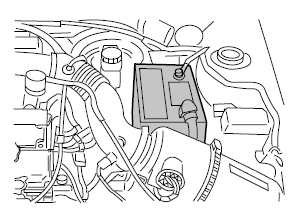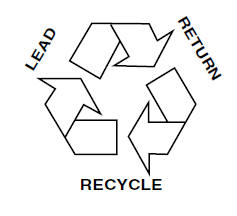Battery
Your vehicle is equipped with a Motorcraft maintenance-free battery which normally does not require additional water during its life of service.

электронный документооборот в здравоохранении в организации
However, for severe usage or in high temperature climates, check the battery electrolyte level. Refer to the scheduled maintenance guide for the service interval schedules.
Keep the electrolyte level in each cell up to the "level indicator".
Do not overfill the battery cells.
If the electrolyte level in the battery is low, you can add plain tap water to the battery, as long as you do not use hard water (water with a high mineral or alkali content). If possible, however, try to only fill the battery cells with distilled water. If the battery needs water often, have the charging system checked.
If your battery has a cover/shield, make sure it is reinstalled after the battery has been cleaned or replaced.
For longer, trouble-free operation, keep the top of the battery clean and dry. Also, make certain the battery cables are always tightly fastened to the battery terminals.
If you see any corrosion on the battery or terminals, remove the cables from the terminals and clean with a wire brush. You can neutralize the acid with a solution of baking soda and water.
Batteries normally produce explosive gases which can cause personal injury. Therefore, do not allow flames, sparks or lighted substances to come near the battery. When working near the battery, always shield your face and protect your eyes. Always provide proper ventilation.
When lifting a plastic-cased battery, excessive pressure on the end walls could cause acid to flow through the vent caps, resulting in personal injury and/or damage to the vehicle or battery.
Lift the battery with a battery carrier or with your hands on opposite corners.
Keep batteries out of reach of children. Batteries contain sulfuric acid. Avoid contact with skin, eyes or clothing. Shield your eyes when working near the battery to protect against possible splashing of acid solution. In case of acid contact with skin or eyes, flush immediately with water for a minimum of 15 minutes and get prompt medical attention. If acid is swallowed, call a physician immediately.
Battery posts, terminals and related accessories contain lead and lead compounds. Wash hands after handling.
Because your vehicle's engine is electronically controlled by a computer, some control conditions are maintained by power from the battery. When the battery is disconnected or a new battery is installed, the engine must relearn its idle and fuel trim strategy for optimum driveability and performance. To begin this process:
1. With the vehicle at a complete stop, set the parking brake.
2. Put the gearshift in P (Park) (automatic transaxle) or the neutral position (manual transaxle), turn off all accessories and start the engine.
3. Run the engine until it reaches normal operating temperature.
4. Allow the engine to idle for at least one minute.
5. Turn the A/C on and allow the engine to idle for at least one minute.
6. Drive the vehicle to complete the relearning process.
- The vehicle may need to be driven 16 km (10 miles) or more to relearn the idle and fuel trim strategy .
- If you do not allow the engine to relearn its idle trim, the idle quality of your vehicle may be adversely affected until the idle trim is eventually relearned.
When the battery is disconnected or a new battery installed, the transmission must learn its adaptive strategy. As a result of this, the transmission may shift firmly. This operation is considered normal and will fully update transmission operation to its optimum shift feel.
If the battery has been disconnected or a new battery has been installed, the clock and the preset radio stations must be reset once the battery is reconnected.
- Always dispose of automotive
batteries in a responsible manner.
Follow your local authorized standards for disposal. Call your local authorized recycling center to find out more about recycling automotive batteries.

See also:
Waste gate solenoid control valve - removal and refitting
Removal
1 The solenoid control valve is mounted on a
bracket located underneath the ignition
distributor (see illustration).
21.1 Waste gate solenoid control valve location (arrowed)
2 Disconne ...
Roadwheel check (Every 12 000 miles or 12 months)
Check the wheel rims for distortion,
damage and excessive run-out. Also make
sure that the balance weights are secure with
no obvious signs that any are missing.
Check the torque of the wheel bolt ...
Bonnet lock release cable - removal and refitting
Removal
1 Working inside the vehicle, remove the
three retaining screws, and withdraw the
lower steering column shroud.
2 Remove the retaining screw, and withdraw
the release cable bracket from t ...
